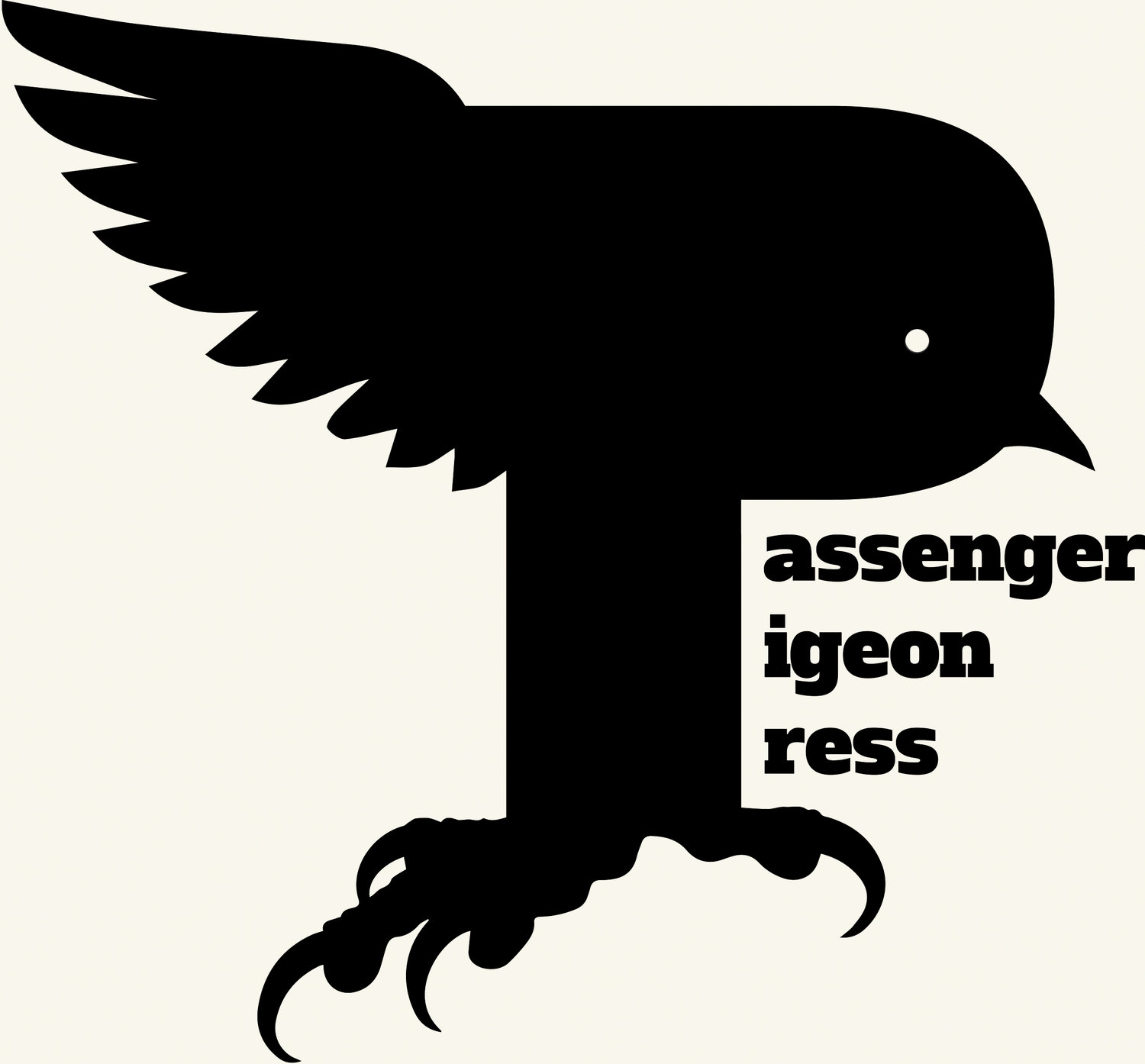Martha’s Quarterly is a quarterly subscription of four handmade artist books a year. Every season, subscribers will receive a new artist book that may take the form of an object, an experimental binding, or a simply beautiful hand-bound book. Martha’s Quarterly aims to present urgent topics that are not always covered by mainstream media or widely archived by cultural institutions. As every person has a library of their own belongings, every issue seeks to exist in the reader’s catalog of possessions as something that might be read through once, revisited again, and reflected upon as a messenger of critical subjects.
Martha's Quarterly, Issue, 3
Spring 2017
Skyglow and the Desert Fox; edited and design by Tammy Nguyen with contributions from Emma Colbert, cover illustration, Andrew Hughes, In the Valley of the Blind, and Andrew Stein, Blitzkrieg in the Orient.
Letterpress and digital print on various papers
8.5" x 5.5"
About the contributors:
Emma Colbert is a Northern Irish born artist who specialises in pastel portraiture, wildlife and landscape. Inspired by nature she produces paintings in a realistic vibrant style. To see her work digitally, visit: www.emmacolbertart.com.
Andrew Hughes is a Writer, Musician & Nomad. Traveling and performing in Europe.
Andrew Stein is a history and American Studies instructor at The Berkeley Carroll School. His research interest lies in race, gender, and sexuality in the U.S. and the Global South, particularly South Africa and the Caribbean.
Martha's Quarterly, Issue, 2
Winter 2016
Cicada Practices by Samuel Snow, the distorted looking glass, by Tinashe Mushakavanhu, and Cicada Practices by Kevin Collier
Letterpress and woodblock on various papers
9" x 6"
About the contributors:
Samuel Snow, M.S., is an evolutionary biologist and ornithologist, currently a Ph.D. candidate at Yale University. His doctoral work explores the fascinating evolutionary consequences of mate choice for sexual ornamentation, mate-system evolution, and social behavior.Tinashe Mushakavanhu is a Zimbabwean born editor and writer. He co-edited the critically acclaimed anthology, State of the Nation: Contemporary Zimbabwean Poetry (2009) and co-cuartor of ReadingZimbabwe.com.Kevin Collier is a senior reporter at Vocativ, where he covers politics, cybersecurity, and privacy. He lives in New York City.




On January 19th, 2017, The Financial Times published an article by the Delhi-based author Nilanjana Roy, The dark side of too much light, where she described “skyglow” — a phenomenon where the night sky is brightened over inhabited areas. This is commonly seen in the night skies of urban areas, where the stars are faint, and the horizon radiates from the city’s electricity. This light has lengthened the human’s work day, allowing for more productivity. It has allowed for more interaction and connection into the darkest hours of night. Yet at the same time, this light is also the sublime sky of pollution, the brilliant child of oil and man.
January 19th, 2017 was also the eve of the inauguration of President Trump. In only a few weeks, he denounced the EPA, implemented an immigrant band, and comparisons between his administration to Hitler’s was viral. In this context, this issue of Martha’s Quarterly takes the toxic phenomenon of “skyglow” and considers it as sky, light, and heat of many literal and figurative understandings.
History, climate change, xenophobia, and government are interrelated, as any other seemingly separate subjects. Before we invited contributors, Passenger Pigeon Press conceptually compared skyglow to the light of Orientalist paintings in the 19th century. These images were some of the first cinematic imaginations of the brown and black body as “discovered” by European explorers. Some of these paintings were interpretations of Morocco, Algeria, Tunisia, and Egypt— the region of some Nazi operations in WWII led by Commander Erwin Rommel, also known as, “The Desert Fox.” This nickname is also the common name for the fennec fox, a fox breed famous for its small size, and big ears which allows it to bare the extreme heat of the Sahara Desert. That said, greenery has sprouted in patches across the desert due to climate change as if to turn the region into a grassland as it once was, 11,000 years ago. Only this time, plants sprout beneath a sky lit by the dazzle of globalizing cities across North Africa.
With this daisy chain of connections, Passenger Pigeon Press invited three cultural producers— the history teacher Andrew Stein, the visual artist Emma Colbert, and the poet Andrew Hughes — to respond to a directed prompt. Andrew Stein is a history teacher in Brooklyn, and we asked him to tell a story about Erwin Rommel and to incorporate skyglow as part of its literary atmosphere. The visual artist Emma Colbert and poet Andrew Hughes are currently traveling across Europe in a motorhome that is also their studio. A naturalist who specializes in animals, we asked Ms. Colbert to interpret the fennec fox with the knowledge that it lives in North Africa and possesses special temperature-controlling ears. Finally, we asked Andrew Hughes to read the Financial Times article mentioned earlier and to respond with a poem.
Their work is now juxtaposed in this Martha’s Quarterly, entitled: Skyglow and the Desert Fox. Mr. Stein recounts Commander Rommel’s theatrical activities in North Africa. Meanwhile, Ms. Colbert and Mr. Hughes’ work were made in Tarifa, Spain as they looked across the Strait of Gibraltar towards Tangier, Morocco. Surrounded by the same cacti that covers North Africa today and throughout WWII, Ms. Colbert painted the fennec fox as Mr. Hughes’ poem created tension between notions of darkness, brightness, and power.
— Tammy Nguyen
Martha’s Quarterly, Issue 3, Spring 2017, Skyglow and the Desert Fox was designed by Tammy Nguyen, founder of Passenger Pigeon Press. It utilizes risograph, digital, and letterpress printing. The papers used are: Staples 20 lb. Ivory, Staples Coverstock Beige, French Paper Poptone Snow Cone Lightweight Cardstock, and Basis Colors 80 lb. Light Yellow. The front image behind Emma Colbert’s painting is a photograph of US military vehicles in Tunisia during WWII. The photograph of Erwin Rommel’s death mask was found discovered by the U.S. Seventh Army troops in 1945. The map of North Africa is a cropped section from 19th century map drawn by the German cartographer, Adolf Stieler.
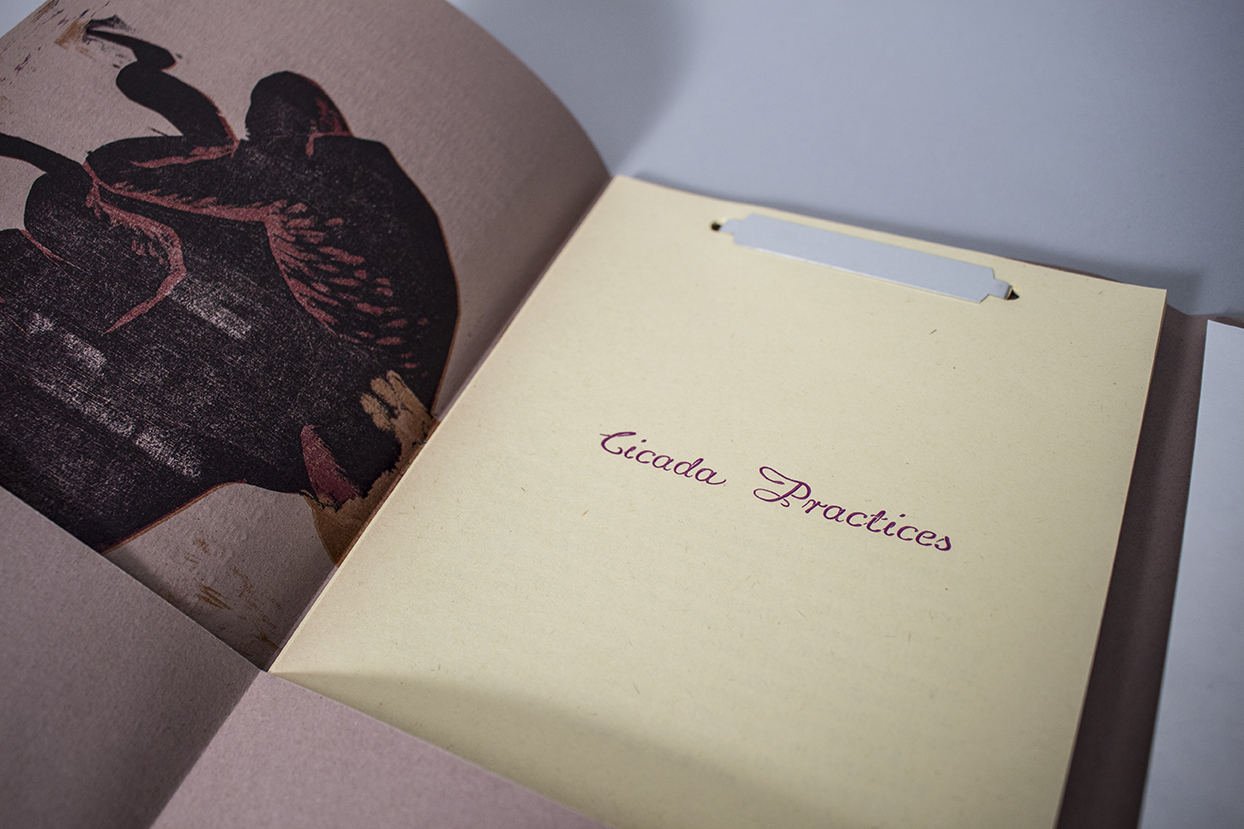
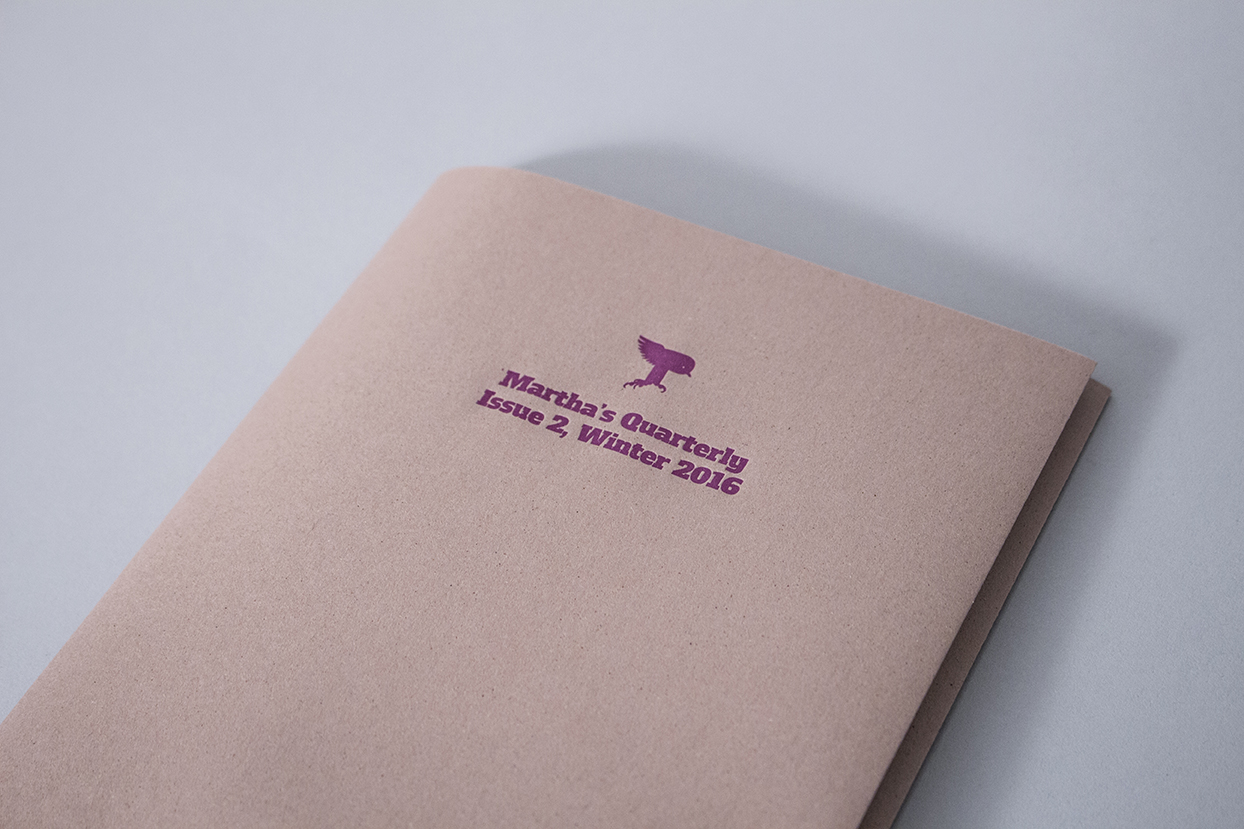
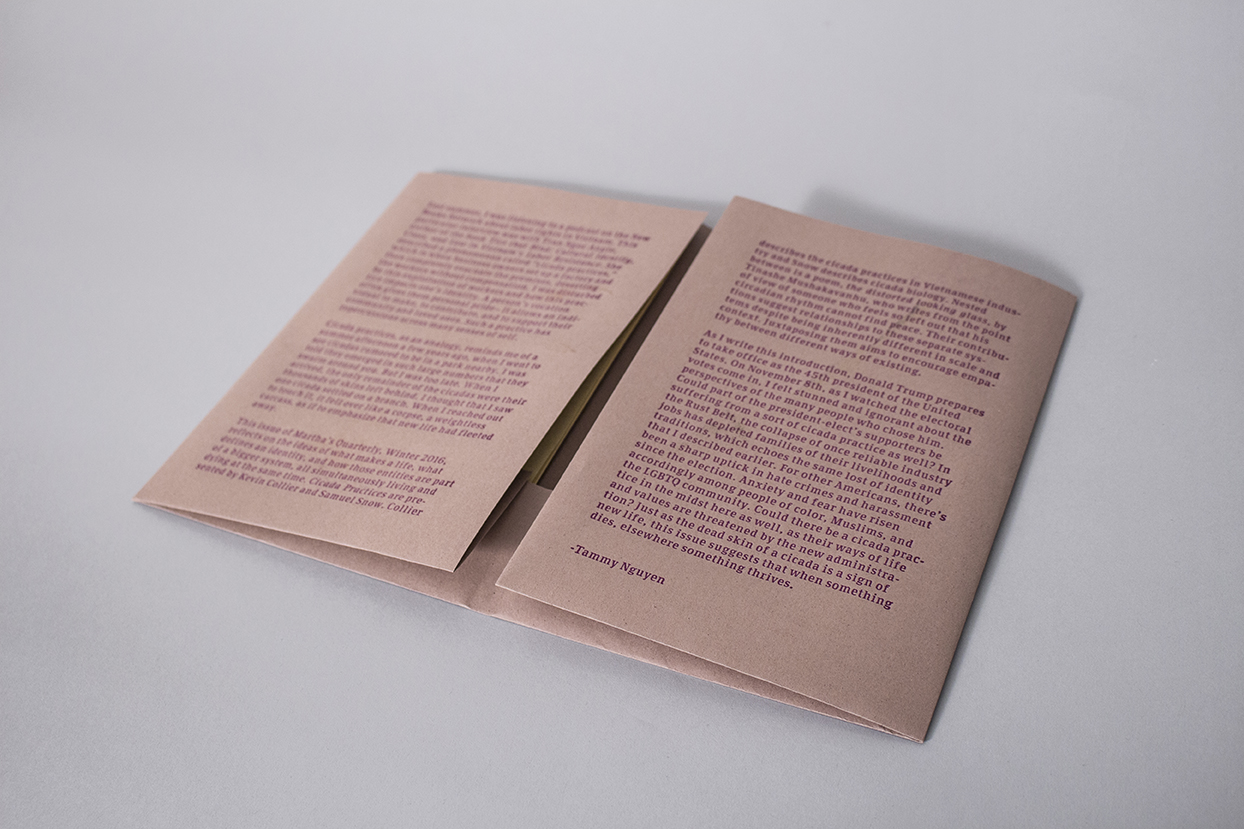
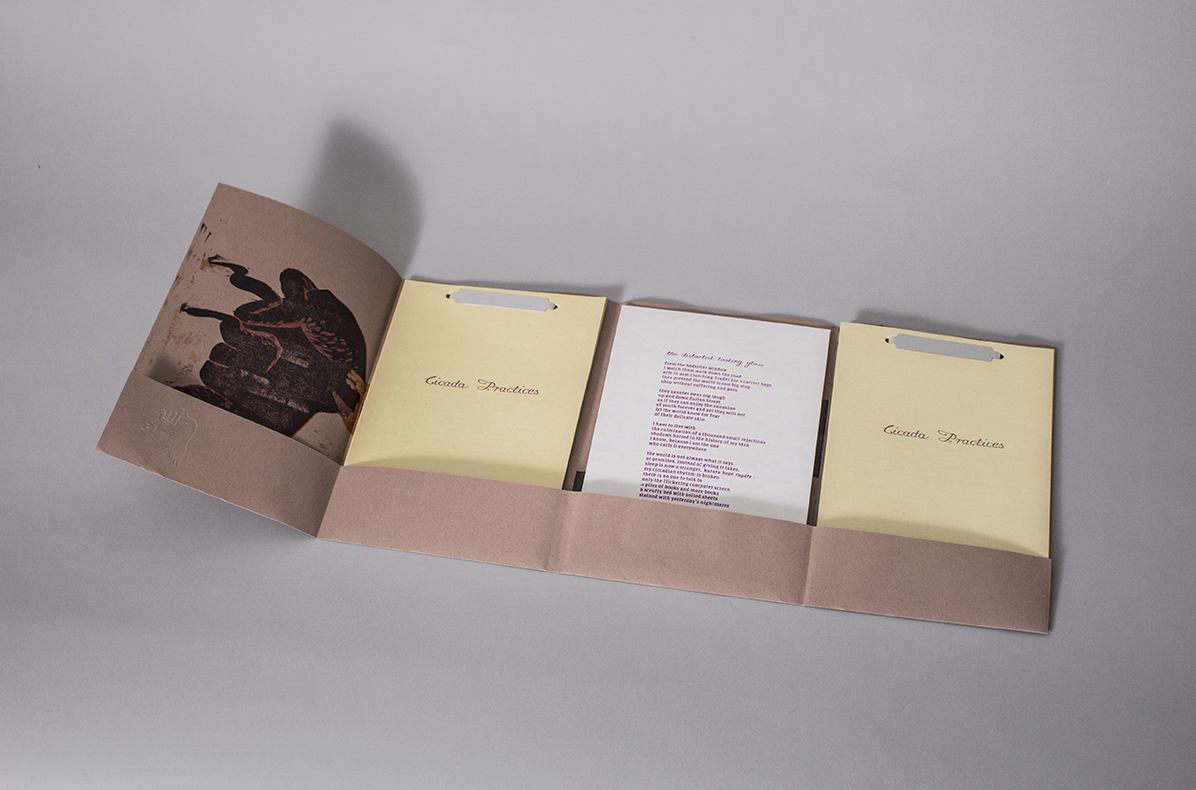
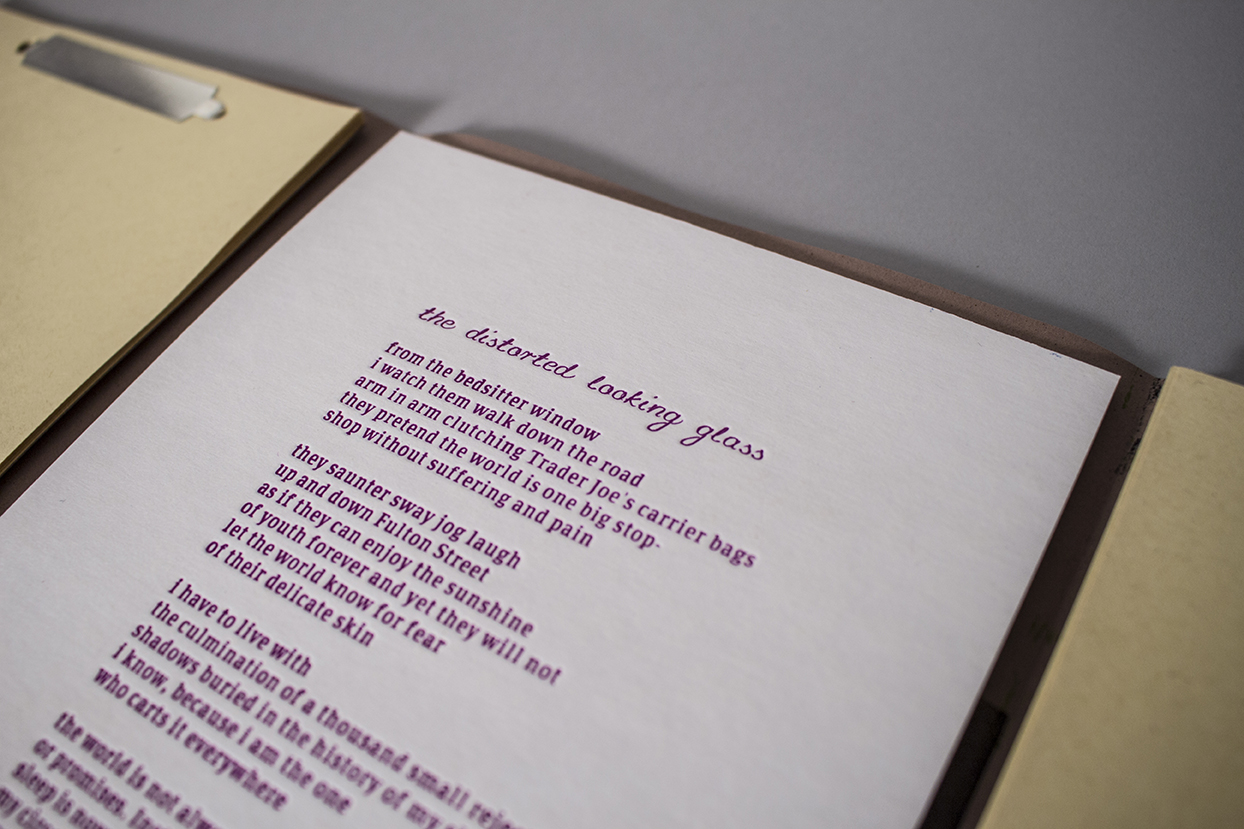
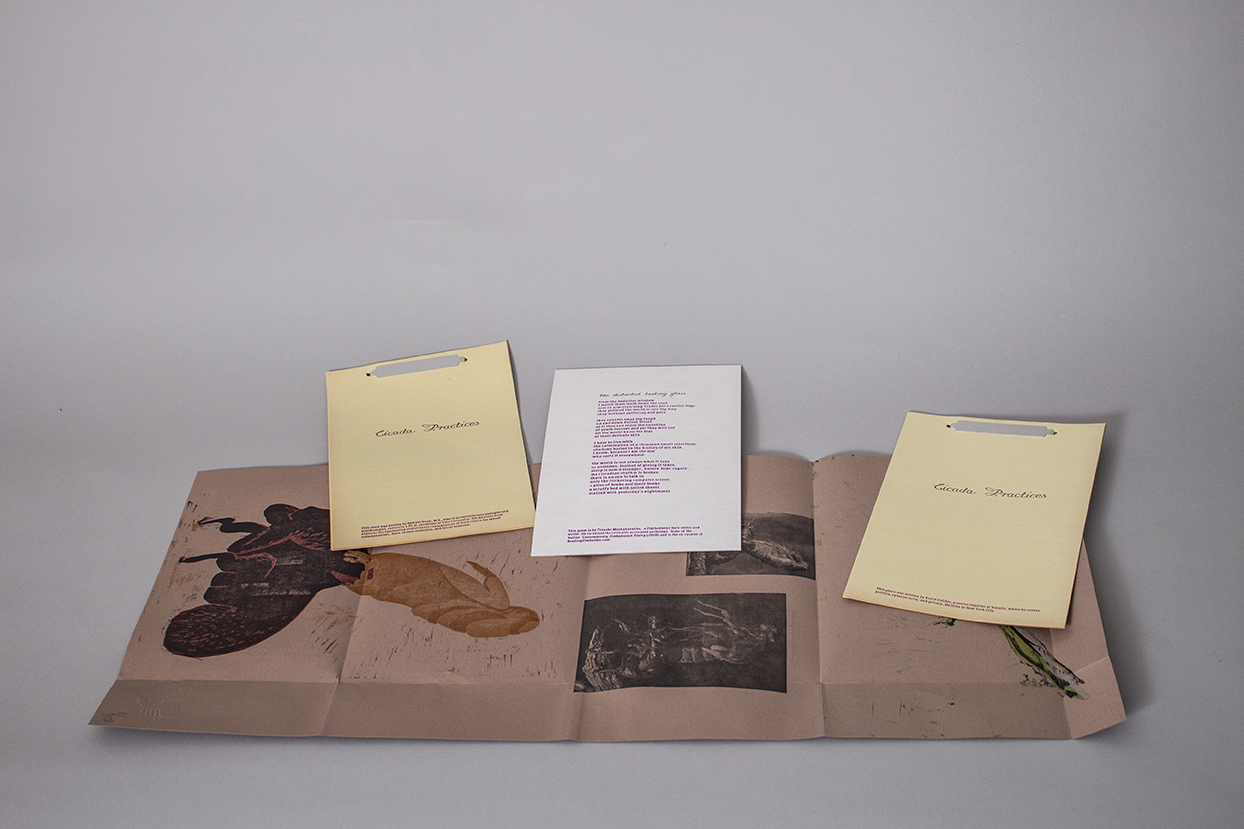
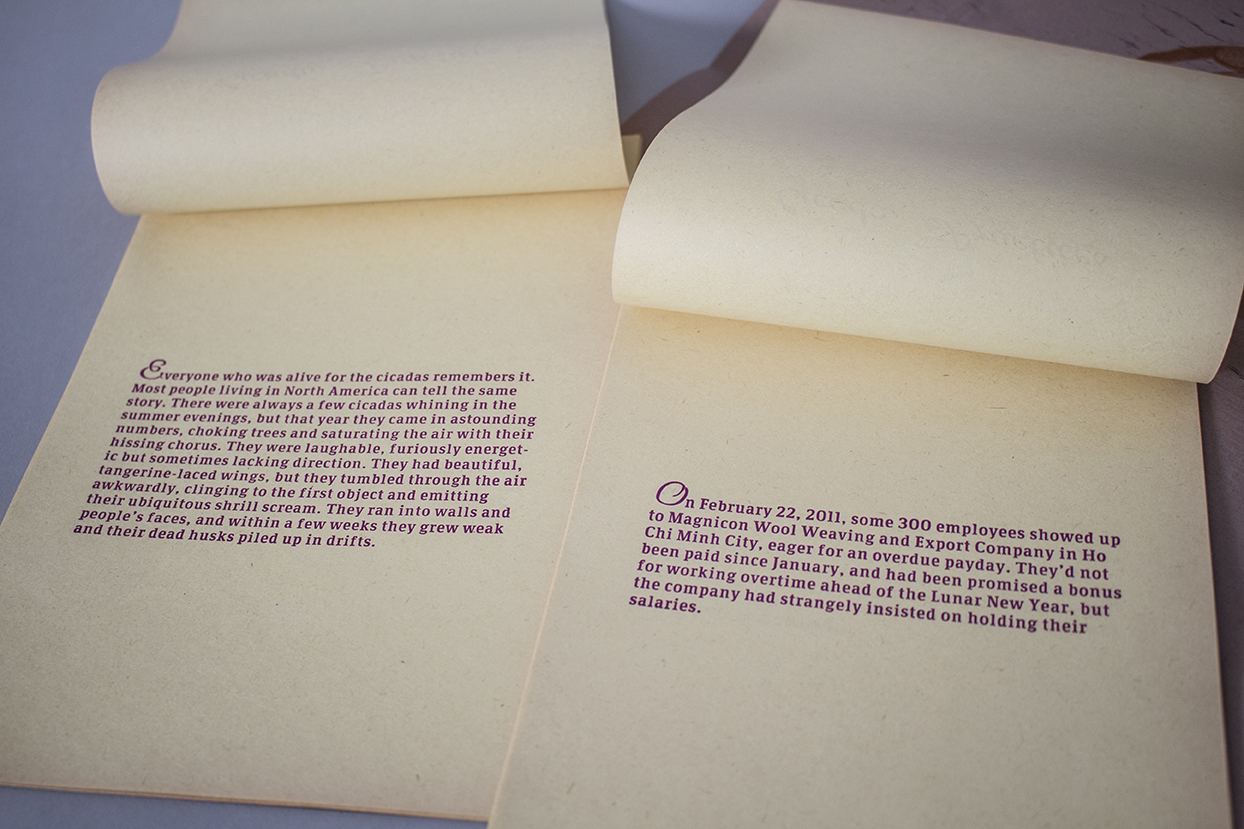
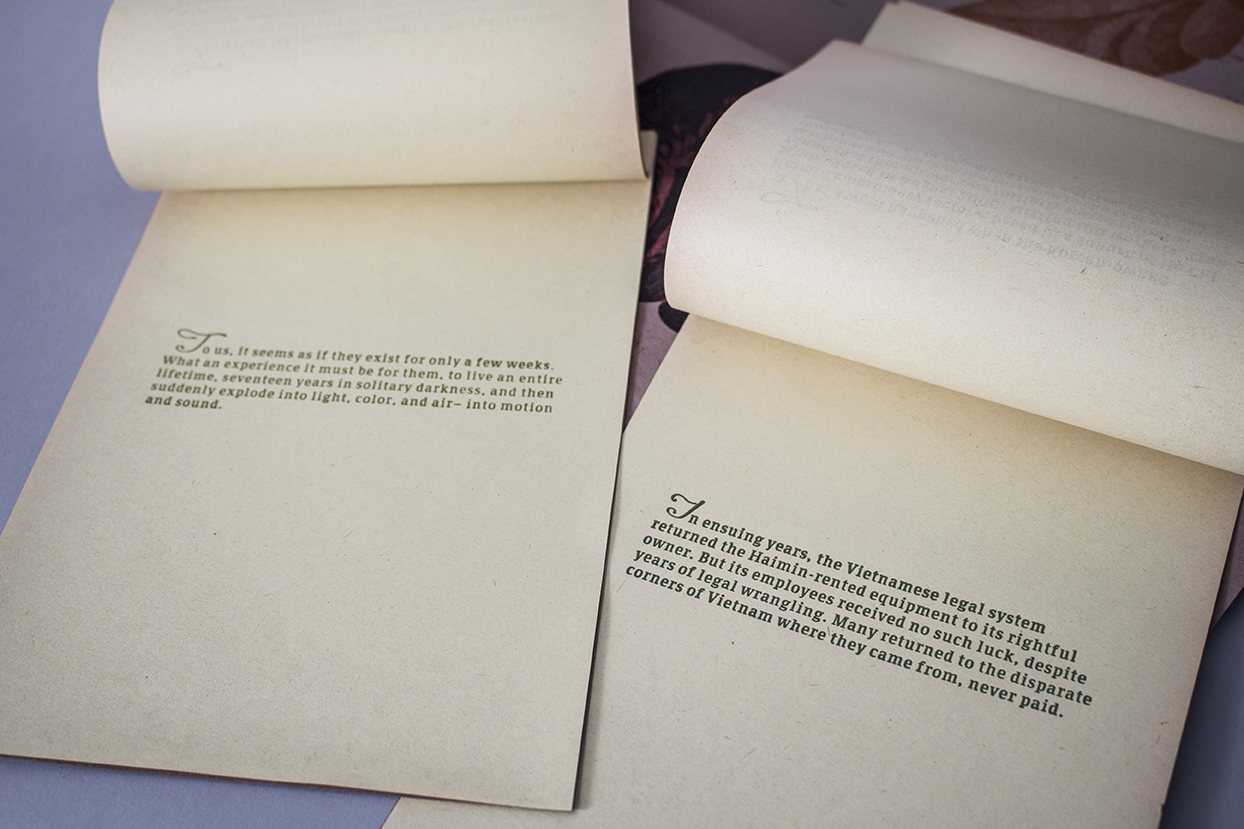
Last summer, I was listening to a podcast on the New Books Network about labor rights in Vietnam. This particular interview was with Tran Ngoc Angie, author of the book Ties that Bind: Cultural Identity, Class, and Law in Vietnam’s Labor Resistance. She described a phenomenon called “cicada practices,” which is when business owners set up a factory and then completely evacuate the premises, deserting the workers without compensation. I was disturbed by this exploitation of workers and how this practice impacts one’s identity. A person’s vocation often gives them personal pride— it allows an individual to make, to contribute, and to support their community and loved ones. Such a practice has repercussions across many senses of self.
Cicada practices, as an analogy, reminds me of a summer afternoon a few years ago, when I went to see cicadas rumored to be in a park nearby. I was told they emerged in such large numbers that they swarm around you. But I was too late. When I arrived, the only remainder of the cicadas were their thousands of skins left behind. I thought that I saw one cicada settled on a branch. When I reached out to touch it, it fell over like a corpse, a weightless carcass, as if to emphasize that new life had fleeted away.
This issue of Martha’s Quarterly, Winter 2016, reflects on the ideas of what makes a life, what defines an identity, and how those entities are part of a bigger system, all simultaneously living and dying at the same time. Cicada Practices are presented by Kevin Collier and Samuel Snow. Collier describes the cicada practices in Vietnamese industry and Snow describes cicada biology. Nested between is a poem, the distorted looking glass, by Tinashe Mushakavanhu, who writes from the point of view of someone who feels so left out that his circadian rhythm cannot find peace. Their contributions suggest relationships to these separate systems despite being inherently different in scale and context. Juxtaposing them aims to encourage empathy between different ways of existing.
As I write this introduction, Donald Trump prepares to take office as the 45th president of the United States. On November 8th, as I watched the electoral votes come in, I felt stunned and ignorant about the perspectives of the many people who chose him. Could part of the president-elect’s supporters be suffering from a sort of cicada practice as well? In the Rust Belt, the collapse of once reliable industry jobs has depleted families of their livelihoods and traditions, which echoes the same loss of identity that I described earlier. For other Americans, there’s been a sharp uptick in hate crimes and harassment since the election. Anxiety and fear have risen accordingly among people of color, Muslims, and the LGBTQ community. Could there be a cicada practice in the midst here as well, as their ways of life and values are threatened by the new administration? Just as the dead skin of a cicada is a sign of new life, this issue suggests that when something dies, elsewhere something thrives.
- Tammy Nguyen
Martha’s Quarterly, Issue 2, Winter 2016, presents three texts: Cicada Practices by Samuel Snow, Cicada Practices by Kevin Collier, and the distorted looking glass by Tinashe Mushakavanhu. This project utilizes woodblock and letterpress printing. The fonts used in the text include Communist sizes 12 and 8, and Promocyja sizes 12 and 36. The jacket which holds the three texts flattens out to a poster. The papers used include Crush Almond 90lbs, and found office paper. The drawings, design, printing, and construction was completed by Tammy Nguyen. This edition was of 150 hand-made portfolios.
Martha's Quarterly
Issue 1,
Fall 2016
The Wild Pigeon of North America
by Chief Pokagon
Letterpress and digital print on various papers
5.25" x 4.25"

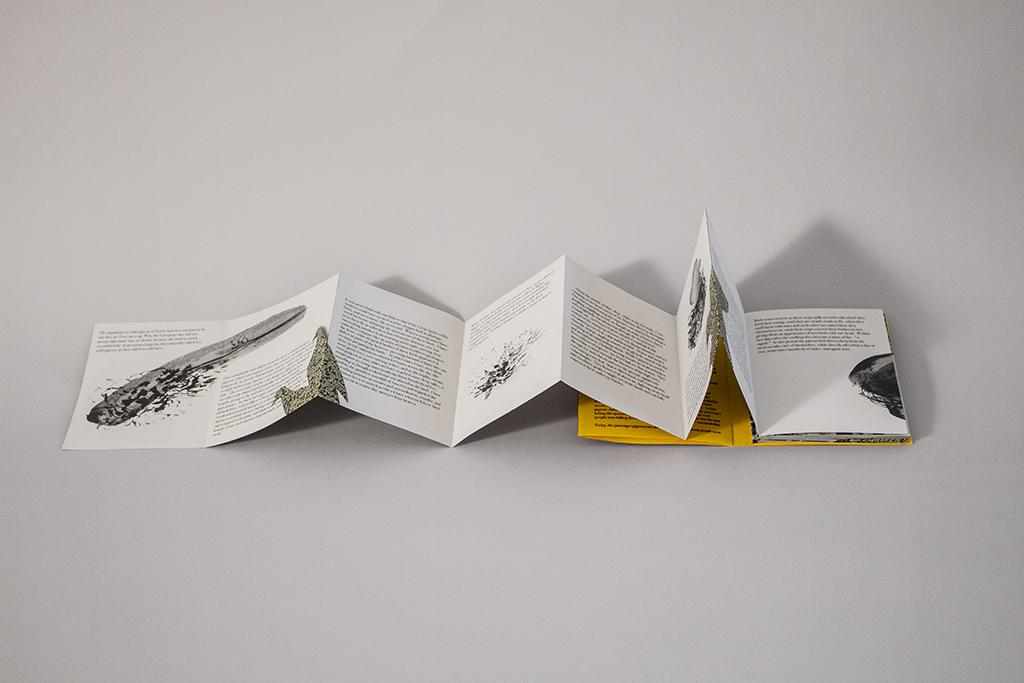
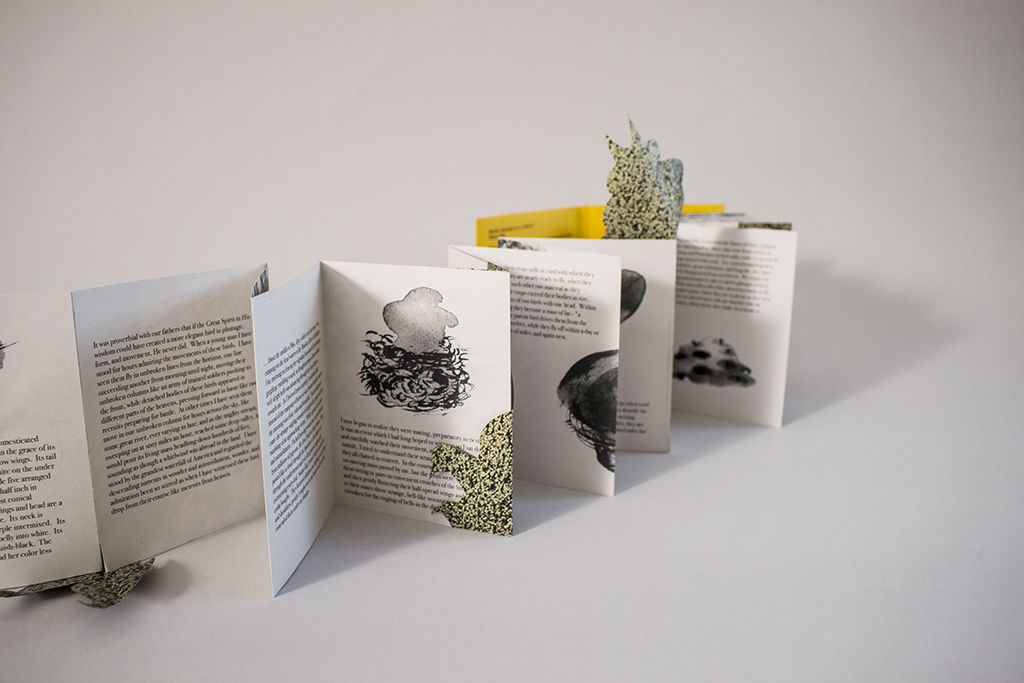
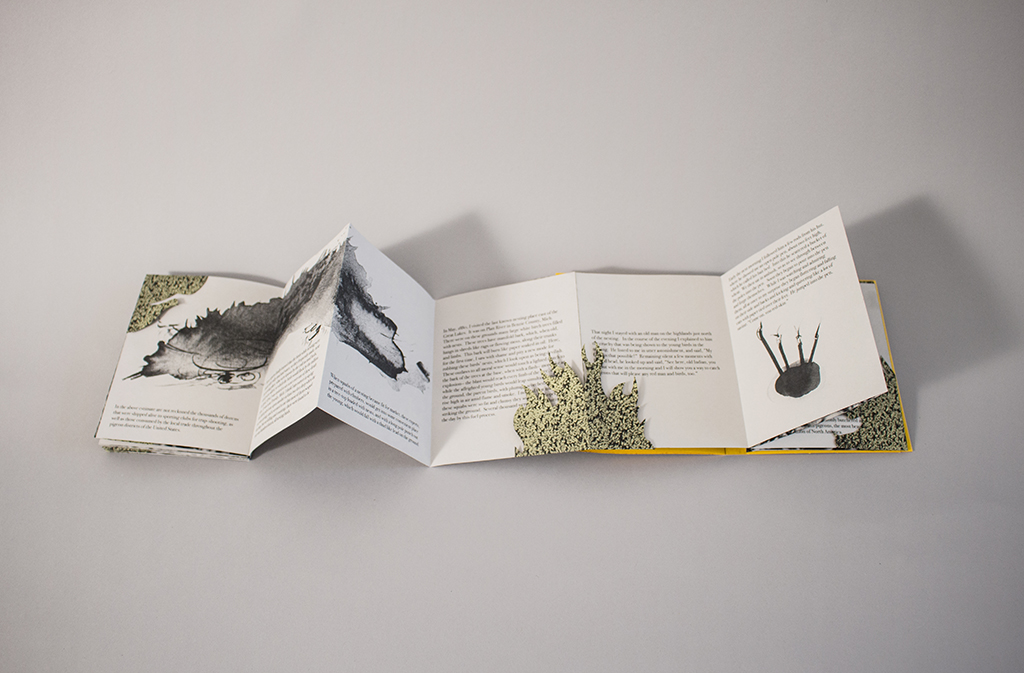
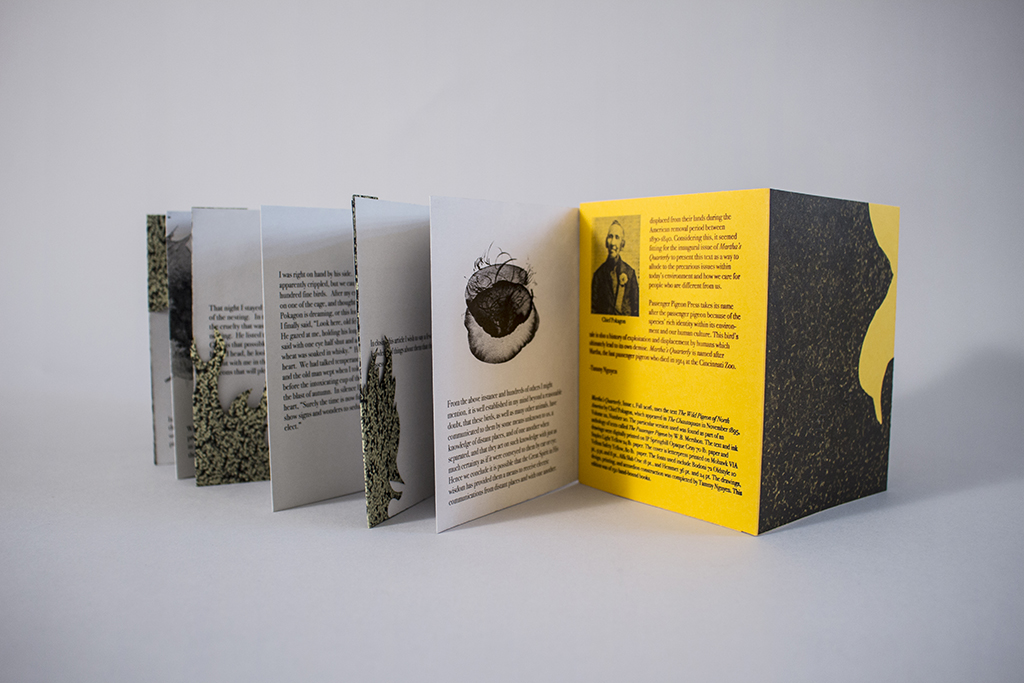
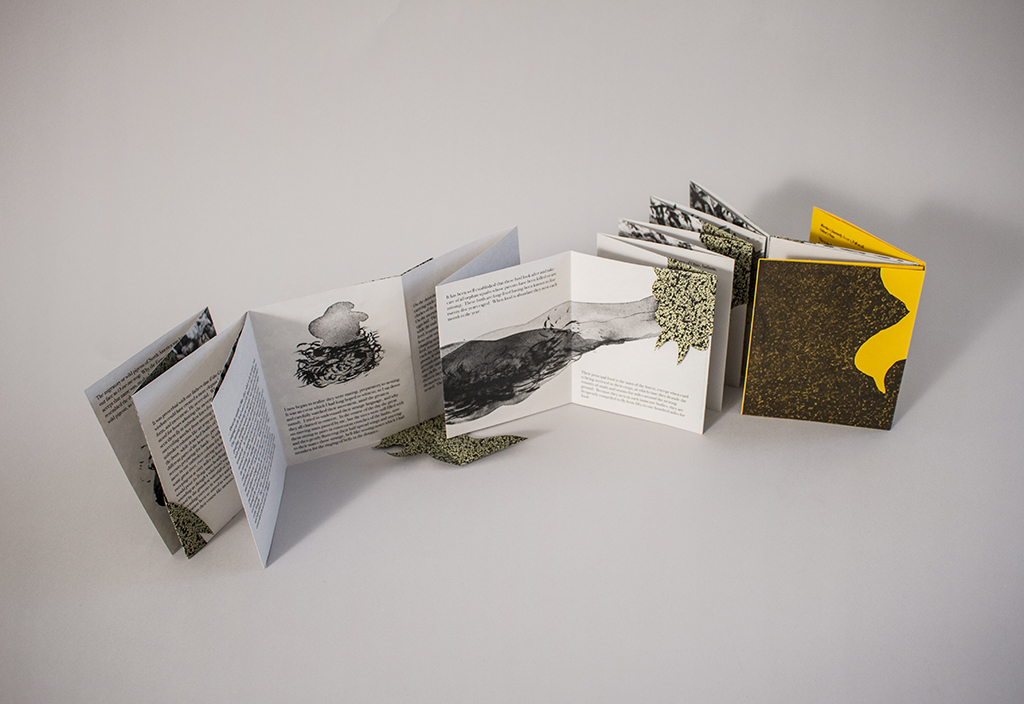
This first issue is a visual presentation of the text The Wild Pigeon of North America by Chief Pokagon, which appeared in The Chautaquan in November 1895, Volume 22, Number 20. Chief Pokagon, or Simon Pokagon, was nicknamed by the press as the “Redskin poet, bard, and Longfellow of his race.” He was a full-blooded Native American and a member of the Pokagon Band of Potawatomi Indians that once dwelled in the Great Plains of North America. An activist, writer, and poet, Chief Pokagon fought for the fair treatment of Native American people. In this article, Chief Pokagon describes his awe for what we know as the passenger pigeon. Additionally, he accounts the way that white Americans were killing the species by the masses. He compares this to the way that his own people were killing the bird while also ensuring the species’ sustainability.
Today, the passenger pigeons are extinct and the Potawatomi people were displaced from their lands during the American removal period between 1830-1840. Considering this, it seemed fitting for the inaugural issue of Martha’s Quarterly to present this text as a way to allude to the precarious issues within today’s environment and how we care for people who are different from us.
Passenger Pigeon Press takes its name after the passenger pigeon because of the species’ rich identity within its environment and our human culture. This bird’s tale is also a history of exploitation and displacement by humans which ultimately lead to its own demise. Martha’s Quarterly is named after Martha, the last passenger pigeon who died in 1914 at the Cincinnati Zoo.
- Tammy Nguyen
